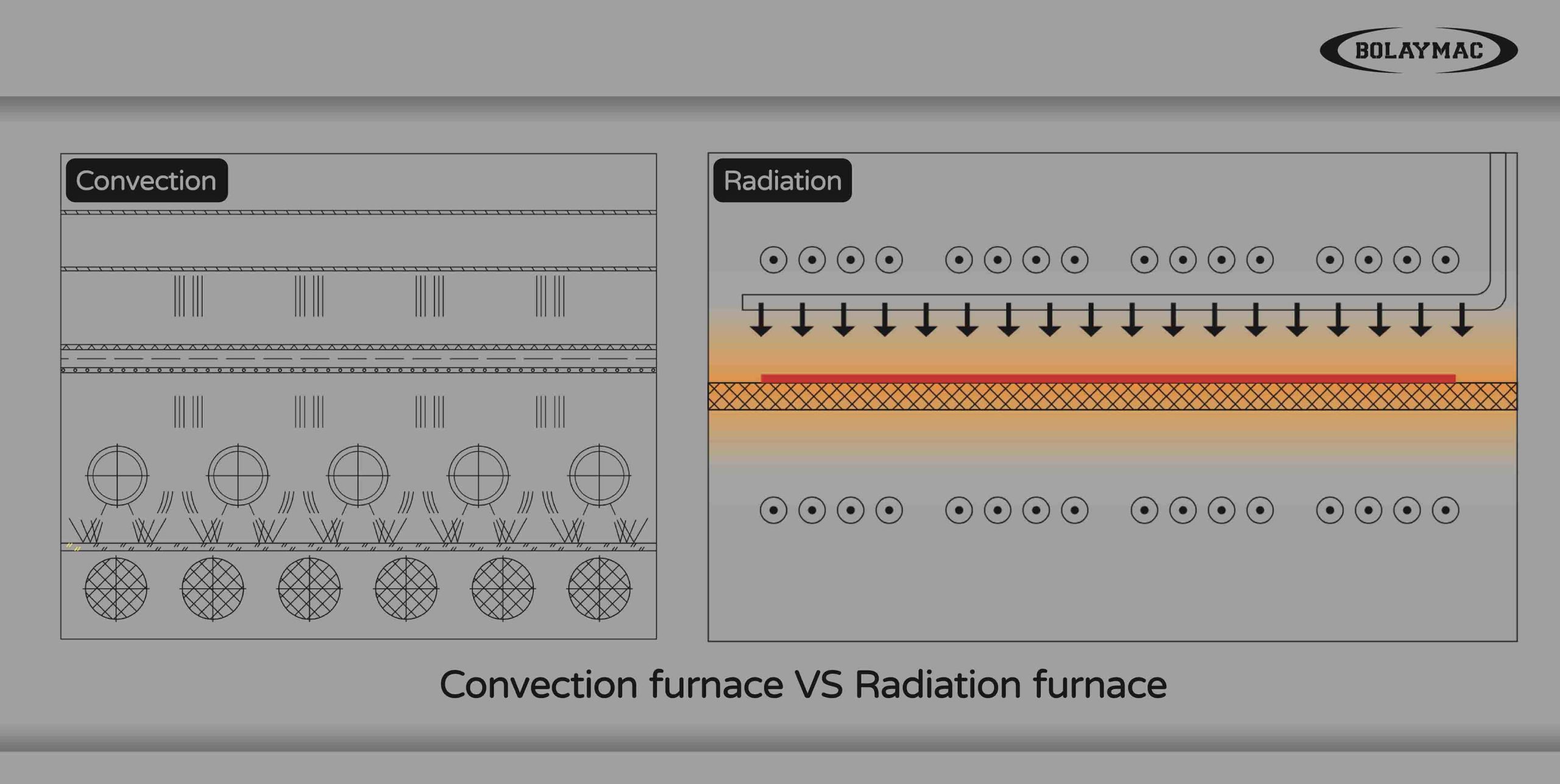Categories
- Technical Support (5)
- Blog (27)
 Convection furnace VS Radiation furnace
Convection furnace VS Radiation furnace
Basically, there are two heating methods in glass tempering furnaces: radiation and convection. Through this article, you can understand the difference between radiation furnace and convection furnace, so that you can choose a glass tempering furnace that is suitable for your glass tempering plant.
Traditional radiation glass tempering furnace mainly adopts the radiation heating method, that is, the heat absorbed by the upper surface of the glass mainly comes from the heat radiation of the heating element, and the heat absorbed by the lower surface of the glass comes from the heat radiation of the lower heating element and the heat conduction of the ceramic roller. Due to the reciprocating motion of the glass in the heating furnace, the convective heat transfer between the glass and the hot air in the furnace is very limited according to the relative motion, and this part of the heat transfer can be ignored.
Since the lower surface of the glass is in contact with the ceramic rollers, it can not only absorb heat faster through conduction, but also absorb the radiation heat in the lower part of the tempering furnace. Therefore, the lower surface of the glass is often heated rapidly; while the upper surface of the glass is heated by only one way of radiation heating, and the heating rate is significantly lower than the heating rate of the lower surface of the glass.
Because the emissivity of ordinary glass is high and the upper surface absorbs heat faster, the radiation glass tempering furnace can already meet the requirements of most of clear glass in the market.
However, with the increasing use of online and offline LOW-E coated glass (energy saving), the traditional radiation tempering furnace can no longer meet the processing needs. Here we developed the new technology of forced convection.
LOW-E coated glass is a film-based product composed of multiple layers of metal or other compounds coated on the surface of the glass, which has excellent thermal insulation effect and good light transmittance. Its coating layer has the characteristics of high transmission of visible light and high reflection of mid- and far-infrared rays, so it is also called low-emissivity glass.
Because the glass reflects infrared rays, and the heating of the upper surface of the glass in the radiation furnace is mainly by infrared heating, it is obvious that the radiation furnace is not suitable for processing LOW-E coated glass. We developed the forced convection glass tempering furnace.
Forced convection glass tempering furnace is equipped with high-temperature convection fans. When the convection fans are working, the impeller drives the high-temperature airflow in the furnace to circulate and reciprocate in the heating chamber to heat the glass, and the upper surface of the glass is heated in two ways: convection and radiation. Good heating of the glass top surface can be obtained by convection system.
